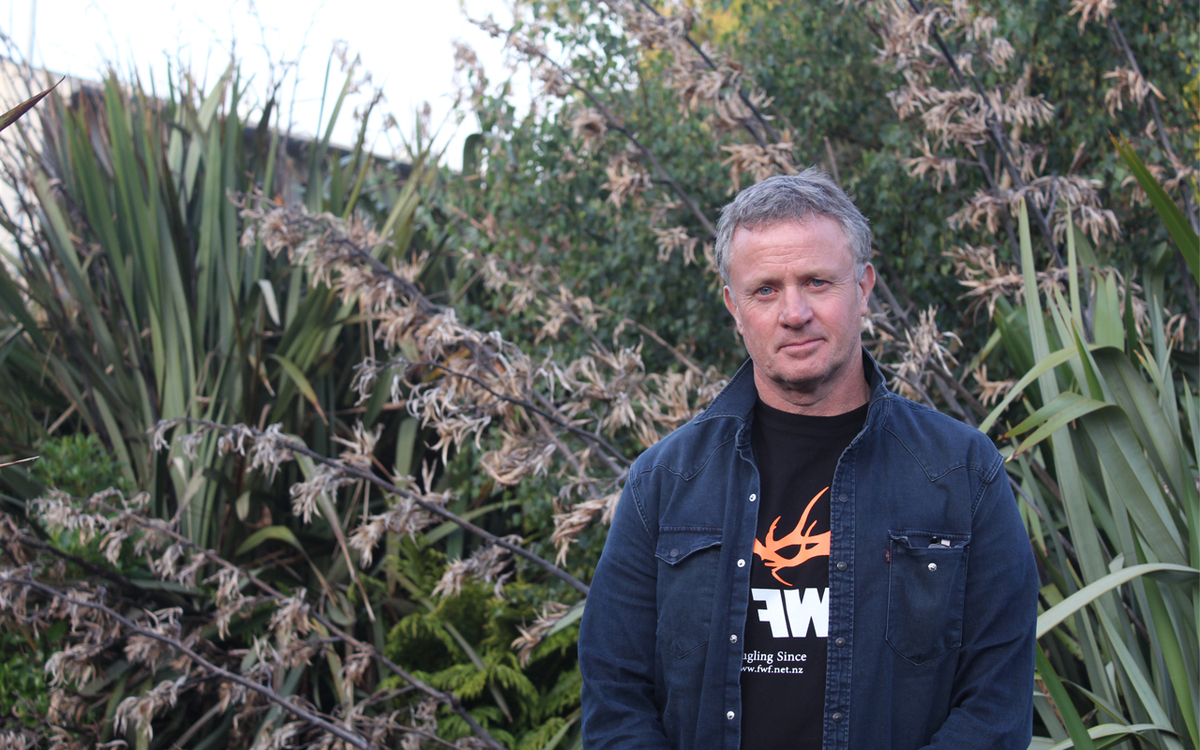Tahr cull headed for high court today
Marjorie Cook
07 July 2020, 5:10 PM
 Roy Sloan, of Winton, says the Fiordland Wapiti Foundation is a model for how to achieve a compromise between hunters and conservation staff.
Roy Sloan, of Winton, says the Fiordland Wapiti Foundation is a model for how to achieve a compromise between hunters and conservation staff.The New Zealand Tahr Foundation is seeking a High Court injunction against the Department of Conservation in the Wellington High Court today, in the hope that the department will be directed to do more consultation with hunters on the 2020 tahr cull programme for South Island national parks.
Foundation chairman Snow Hewetsen has confirmed to the Southland App the injunction application was going ahead today (July 8).
A foundation petition to stop the department from culling tahr has collected about 400,000 signatures.
Mr Hewetsen said the department did not consult properly on the 2020 culling programme and was proposing a three-fold increase in control work, which was “unacceptable’’ to the foundation.
“They will have to come up with another proposal . . . We are genuine conservationists as well and we want to have a good outcome for the environment and the animal,” Mr Hewetsen said.
“Any new plan has to be based on science and research,’’ he said.
Game Animal Council chairman Don Hammond said he had written to Conservation Minister Eugenie Sage yesterday morning offering to broker a deal for all parties.
The council is a statutory body with its members appointed to advise the minister.
However, it was frustrated with the short period of time given to members of the Tahr Plan Implementation Liaison Group to comment on the 2020 cull.
Mr Hammond said he received the final Tahr Control Plan from DOC just hours before operations were due to start.
“Only two days were provided for consultation. The final plan being released minutes before it comes into effect and with almost no change from the original version indicates a pre-determined outcome and the hunting sector was not intended to be part of the plan development process,” Mr Hammond said.
The Himalayan tahr is an endangered species in its own country and New Zealand is the only other country in the world where they live.
The animal was introduced in 1904 and is a sought-after hunting trophy, giving New Zealand’s commercial hunting industry, said to be worth $100 million, a favourable point of difference over other countries.
But tahr are also regarded as a threat to alpine environments. The department’s Himalayan Tahr Control Plan permits a population of 10,000, but states there should be zero tahr in the national parks.
The Forest and Bird Society is also taking legal action against the department over the way it manages tahr and alleges it has breached the National Parks Act.
Mr Hammond said the court actions showed there was “a wide spectrum of disenchanted people and that tells you the system is broken’’.
Fiordland Wapiti Association president Roy Sloan, of Winton, said the problem behind the tahr plan was a lack of science and modelling of the control programme.
Mr Sloan was a founding member of the Game Animal Council but no longer serves on that organisation.
He agreed it would be good to get everyone back around the table to find a solution and suggested the Fiordland Wapiti Foundation was a model for how to achieve a compromise between hunters and conservation staff.
“We have a model here that could be adopted around the country and it works. It might not keep everyone happy, but it is win-win,’’ Mr Sloan said.
The association’s group of volunteers manage about 175,000 hectares in Fiordland, under an agreement with the department on animal numbers.
It also runs the ballot for the area, with applications opening on August 1 and drawn in October.
Several thousand applications would be made every year from hunters all over the world, “but just 450 lucky people get to hunt,’’ he said.
The foundation removes about 1000 wapiti from the conservation estate a year and since 2004 has removed about 16,000 animals.
“Doc has 20 alpine transepts that they measure for browsing pressure. When there is too much browsing it means we are not doing the job,’’ Mr Sloan said.
The association works with Landcare New Zealand staff and independent animal biologists to gather as much scientific information as they can about wapiti.
Common sense was needed with tahr management, Mr Sloan said.
“When we have conflict, then really at the end of the day, there are no winners.’’
AG | TRADES & SUPPLIES
OLD NOTICES | JOBS


